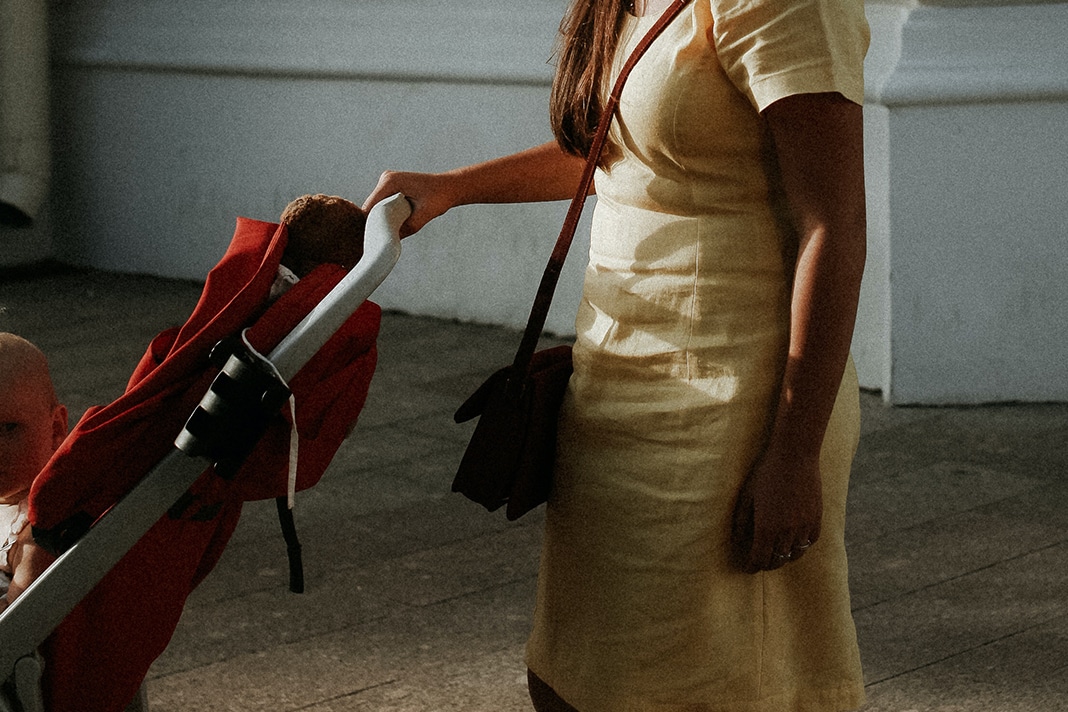The average age children tend to stop using their stroller is two years and nine months. So, how can we stop buggies heading to landfill after the toddler stage?
One of the most important purchases you’ll make as a parent is your buggy. According to a 2019 study by One Poll, parents clock up a massive 750 ‘buggy miles’ per year – a staggering distance which rivals family car journeys. Transporting little ones to nursery, to the shops, on family walks and on day trips, there’s no arguing that pushchairs aren’t a crucial piece of parenting kit. Even parents who favour baby carriers still end up buying one.
Pushchairs are so central to family life that it’s no surprise that many parents purchase them brand new for their first child. Parents also often own more than one pram to meet different needs – such as a lightweight city-friendly pushchair, jogging stroller, and a model with good suspension and wheels for country walks in the fresh air. However, they have a fairly limited life span. The same study by One Poll found that the average age children tend to stop using their stroller is two years and nine months.
With their large frames, many brands make their pushchairs using plastic and other materials that don’t biodegrade. The fabric used for stroller seats also sometimes contains plastic fibres. Even if your buggy is made using recycled materials such as plastic bottles, sending it to landfill after the toddler stage still causes a huge environmental toll contributing to climate change. So what are the other options if you don’t want your pram to become an environmental problem like textile, household and food waste? Here Absolutely Mama investigates.
Keep it for younger babies
Keeping your buggy for your next baby is a surefire way to delay it from heading to landfill. However, if you’re keeping it ‘just in case’ you have another baby that might not be the smartest plan of action. Buggies that aren’t stored properly for long periods of time can get dusty, dirty, and broken and parts can go missing. This makes them harder to sell or pass on once you are ready to part with them. If you keep your buggy too long, it might also be less desirable because newer and more up-to-date models will have come onto the market. These unloved and unwanted buggies tend to end up in landfill when they could have been sold or passed on earlier and had some extra use.
Pass it onto other friends and family
Passing your buggy onto another new parent once you’re done with it is also an eco-friendly option. However, keep in mind that it’s not always that easy to do. Parents tend to have very specific needs when it comes to buggies for their new baby, so friends and family may prefer to buy the model they really want, whether that’s new or second hand. If you’re not able to pass on your buggy, then it might sit around collecting dust for ages and then eventually end up at the dump.
Sell it on eBay or Facebook Marketplace
Reselling your buggy is one of the best ways to extend its lifespan. Buggies are an expensive piece of kit, so you’ll also be able to recoup some of your money. The obvious places to resell your buggy are eBay or Facebook Marketplace. However, listing your pushchair on these platforms can be time consuming and a bit of a faff. You’ll need to clean it thoroughly first, take all of the pictures, create the listing, answer questions from potential buyers and then re-list it if the sale falls through. This can be a huge time suck when you’re busy with little ones and this is the reason why many parents find it easier to bin their buggy when they’ve finished with it.
Donate it and support a charity
Giving your buggy to charity is not only eco-friendly, but helps a family in need. However, many charity shops are overflowing and can’t cope with the level of donations. If items don’t sell they may end up in landfill anyway. So it is important to make sure your stroller is going to a charitable organisation that can definitely make sure it is re-homed properly. This can take a bit of research, which again can be time consuming and off-putting when you have little ones.

Enlist the expert advice of a buggy site
Thankfully, there are buggy experts out there to help. Buggy Park helps you sell your pushchair or donate it to charity.
If you use the platform’s ‘no hassle service’ they will collect your pram from you, professionally clean and tune it up, photograph and video it for you, upload it to the Buggy Park site and YouTube channel and list it on Facebook and Instagram shops. They will even store it for you and ship it out to the buyer once it is sold. You can also sell your accessories through Buggy Park – such as your rain cover, footmuff, or buggy board. So much easier than trying to sell your buggy yourself, increasing the likelihood of it finding a new home.
Buggy Park also works with Little Village HQ, a charity that supports families in need all across London and Hertforshire. Donating your pushchair through Buggy Park is also a great way to stop it from heading to landfill. Just note that Buggy Park is unable to accept car seats, even if they are part of the original travel system.
If you want to go one step further, you could also buy your pram second hand through the Buggy Park site. Buggies are made to last, so buying them second hand or passing them on is one of the most responsible things parents can do for the planet.
This is a sponsored post created in collaboration with Buggy Park






COMMENTS ARE OFF THIS POST